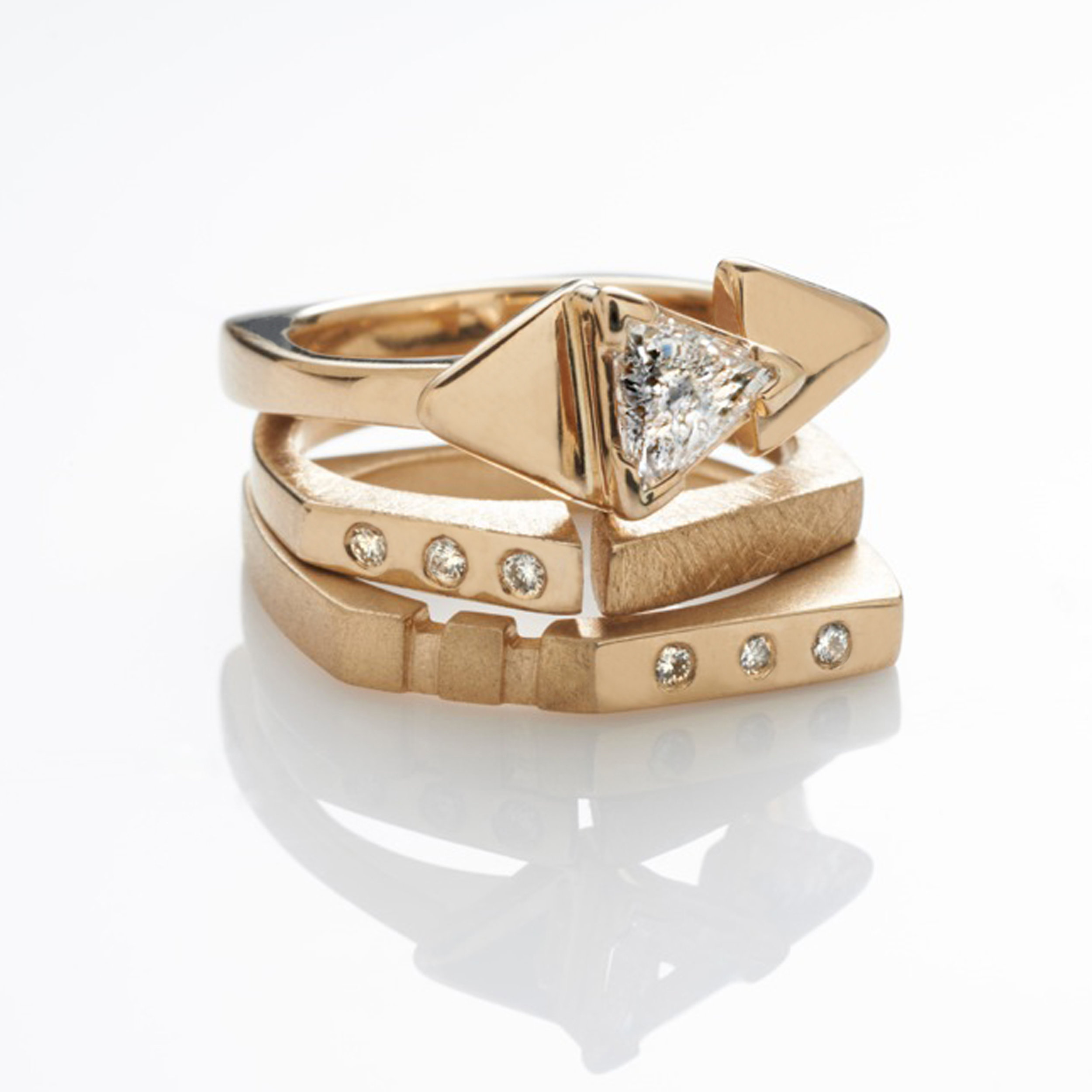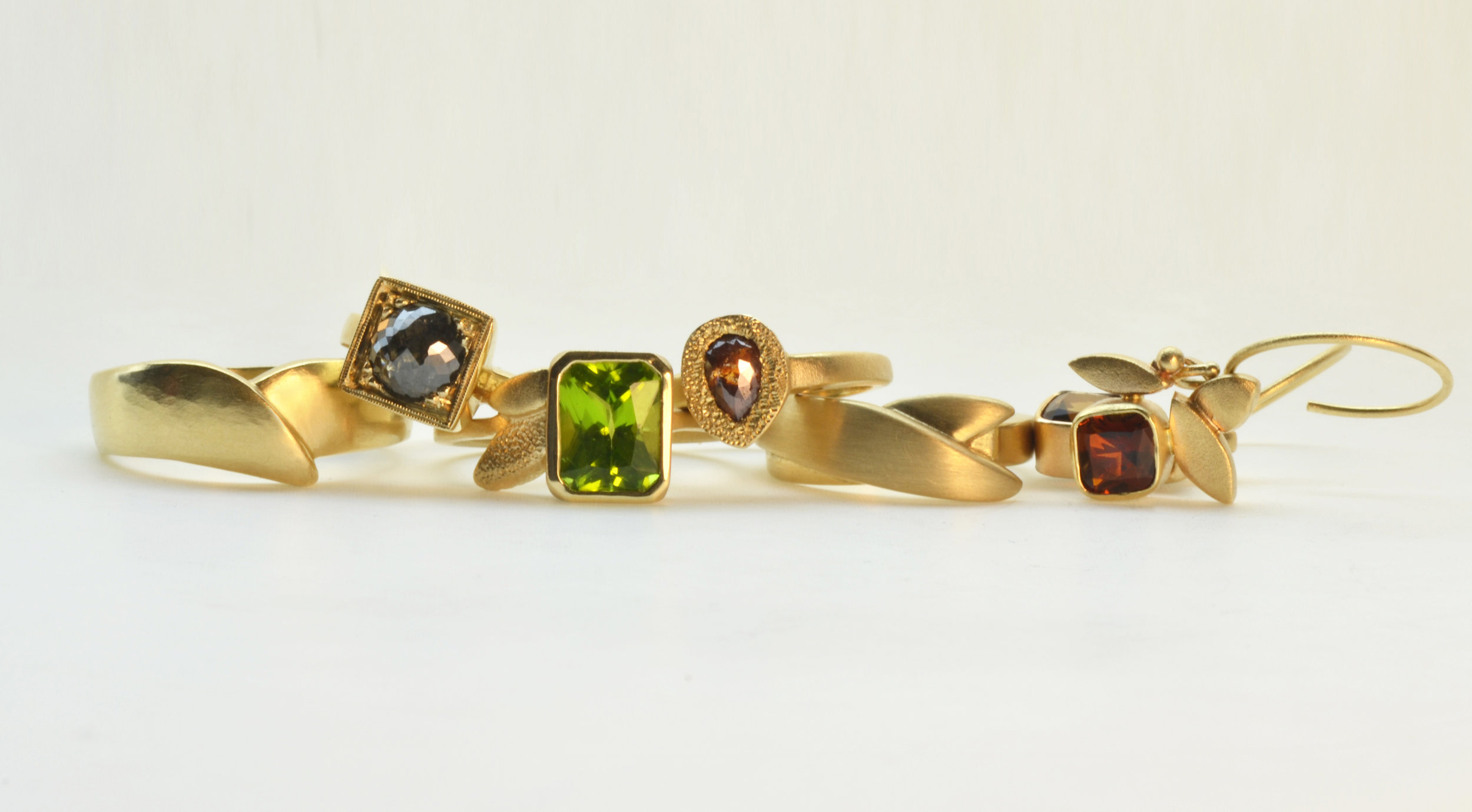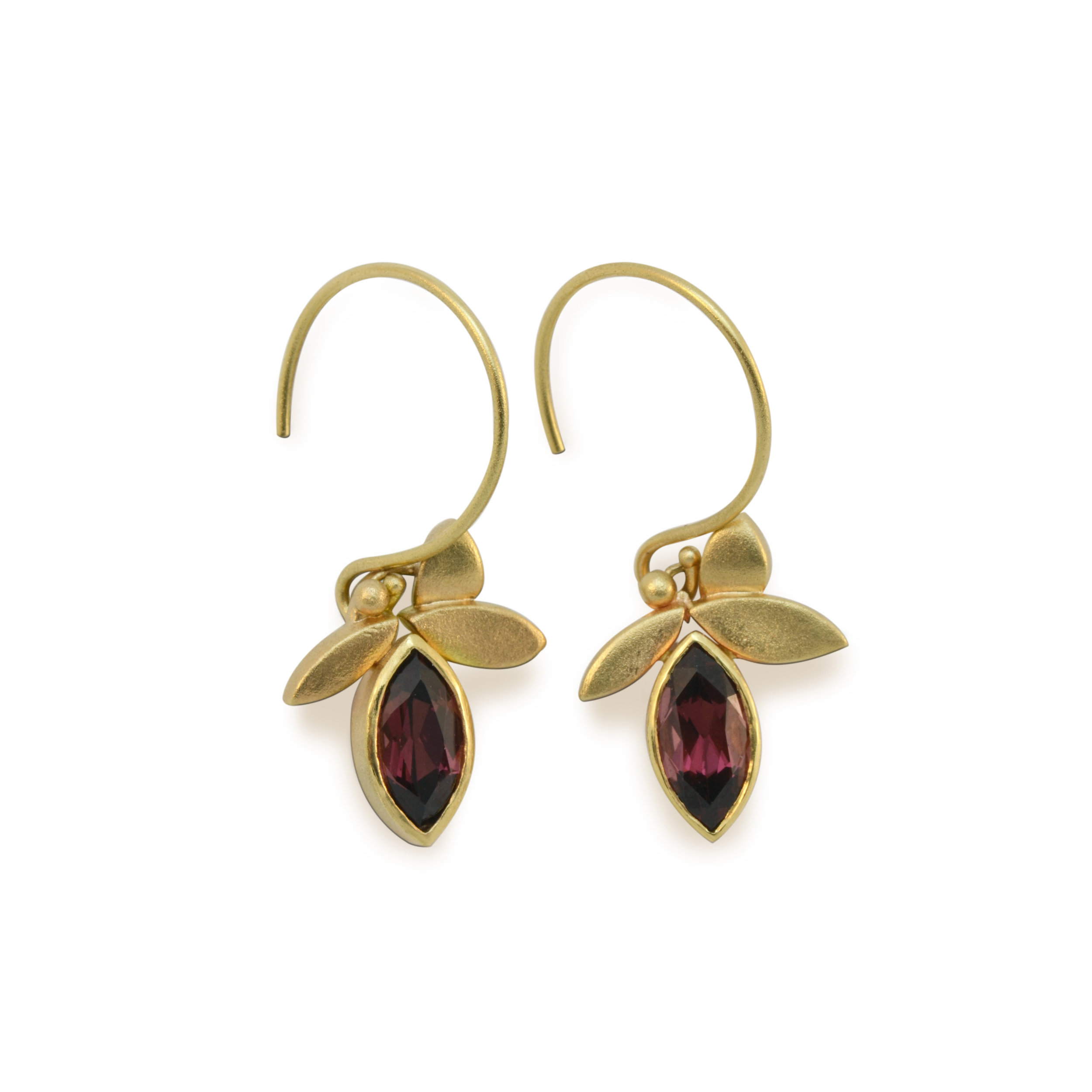Susan Crow
The East Fourth Street eco-jewelry collection is a culmination of designer Susan Crow’s deep connection to design and core belief that we need to preserve and restore our environment, not take away from it. It is a socially responsible brand of luxury jewelry handmade from Fairmined or recycled precious metals and environmentally and ethically sourced gemstones. The jewelry is designed and handmade in their low-impact, environmentally conscious Minnesota studio.
Artisan jewelry designer Susan Crow's raw attraction to industrial simplicity, mechanically and aesthetically, and their symbiotic relationship, is made evident in her clean, modern designs.
Recognized as a leader in integrating sustainability into her design process, Susan is a member of Ethical Fashion Forum, The Fellowship 500, Ethical Metalsmiths and Fair Action Jewelry. Susan is also licensed by the Alliance for Responsible Mining to make jewelry from FAIRMINED gold and silver.
East Fourth Street offers earrings, bracelets, pendants and wedding rings, jewelry for both men and women that are in a partnership with our environment.
Check out Susan's work at the upcoming American Craft Show at RiverCenter in St. Paul put on by American Craft Council.
Talk about the beginnings of East Fourth Street. What inspired you to begin this endeavor?
After graduating from college in Design, I worked as a metalsmith and then as a product designer in the consumer home industry, designing textiles, outdoor garden product and furniture. In 2008 I went back to college at MCAD in their Sustainable Design program and realized that I wanted to change how and what I was designing. Always an environmentalist, I was excited to find a program that could teach me about closed loop manufacturing, zero waste, ethical marketing and life cycle analysis. These sustainable principles helped me launch East Fourth Street Jewelry in 2010. It’s mission concentrates on the environmental and ethical back-story of my supply chains and process.
Were you always directly pursuing a creative path?
As a kid I was always making stuff, trying to figure out how things worked. Looking back, I probably would have loved engineering but instead, studied design specializing in metalsmithing. It prepared me to work as a jewelry designer out of college and also to step into the consumer product design industry.
On your site, you describe East Fourth Street as a, "Socially responsible brand of luxury jewelry handmade from Fairmined or recycled precious metals and environmentally and ethically sourced gemstones. The jewelry is designed and handmade in their low-impact, environmentally conscious Minnesota studio." What do you think being more cognizant of this aspect of jewelry can do for the individual? How about on a larger scale?
Last year a man contacted me and said because of the environmental impact of jewelry, he previously couldn’t bring himself to buy his girlfriend an engagement ring. I made him a ring from recycled white gold and a reclaimed GIA certified white round diamond. He was really happy and a few months later I made their wedding rings. On a larger scale I launched East Fourth Street Jewelry as a socially responsible fine jewelry label, and joined Ethical Metalsmiths, an organization dedicated to raise awareness and activate jewelers to support change that leads to responsible mining and supply chain transparency. In 2013 we created an Ethical Sourcing Consortium, a handful of U.S. jewelers that supported specific gold mine communities in South America. These gold mines had to become certified by The Alliance for Responsible Mining out of Columbia in order to be certified as Fairmined (in partnership with Fair Trade) gold mines. Our little group of 23 U.S. jewelers had to become licensed by ARM to sell their Fairmined gold which supports the miners, their families and their communities.
We successfully brought Fairmined gold into the U.S. for the first time. The jewelry industry has one of the highest environmental and ethical footprints of products because of mining and the high toxicity of the jewelry making process. Most materials used by jewelers can’t be traced to their origin. Gold, gemstones and diamonds are mined in areas of the world where ethical and environmental standards are few.
"The Fairmined Standard is world leading in its ability to deliver positive impact to the miners and their communities and is a valued tool to transform artisanal and small-scale mining into an active force for good. The Fairmined Standard is world leading in its ability to deliver positive impact to the miners and their communities and is a valued tool to transform artisanal and small-scale mining into an active force for good." -www.fairmined.org
The global awareness around the ethical treatment of textile workers in the fashion world runs parallel to what is going on with workers in the mining industry and the production of jewelry. It’s important to me to live as ethically as possible and do the most I can to stop the exploitation of miners, gemstone cutters and jewelry factory workers as well as the environmental damage created by mining, jewelry processes and production waste.
As a sustainable artisan jeweler, I am dedicated to incorporating ethical and environmental principles into East Fourth Street’s design and production.
It's not uncommon for artists and makers to simply want to create, disregarding the business side of their creative endeavor. How are you on the business side of East Fourth Street? Is it difficult to do both aspects well?
I create items made from gold, diamonds, gemstones and silver. In order to afford to buy my materials, I have to sell my jewelry. As a businesswoman who owns a small business I have to understand all aspects of running a business or hire someone that does.
I find your style of jewelry so modern and clean, yet interesting and unique in its shapes and textures. How has your creative voice and style evolved in your jewelry? How have you evolved alongside it?
I grew up and live in Minnesota with strong northern connections of Scandinavian design and culture. The minimalistic, clean lines of Danish design as well as the textures and shapes of nature continue to influence my lifestyle and design.
You have an exceptionally environmentally conscious and sustainable way of making jewelry. Is this a challenging model?
It is more difficult to design and make jewelry sustainably because I have to know the back-story of my materials. I try to trace all of my materials from mine to market. This means that I vet my gemstone and diamond vendors to insure that they know where the gemstones are from and if they were mined and cut ethically - not at the expense of another person's human rights. That includes the use of child labor and slave labor, which unfortunately is a problem in the jewelry industry.
My metals are recycled or Fairmined. It also means that I don’t use certain processes in the making of jewelry because of the toxicity to the environment.
What do you find gratifying in making jewelry in this way?
I can go to sleep at night knowing that I am trying to change the relationship and understanding people have with their jewelry.
In terms of living and making in Minnesota, do you feel connected to this place?
I grew up in Minnesota and as much as I love to travel, over the years I’ve realized that this is my home and the place I’m really proud to be from.
What do you see for the future of your business?
I am on the Board of Ethical Metalsmiths and chairing a new committee that is focused on the responsible sourcing of gemstones. We are working with people from all over the world with the goal to create a Responsible Buying Group that seeks to evaluate gemstone vendors. We feel that there are many jewelers/designers who are also concerned with gemstone origin that would be interested in knowing the history of the colored gemstones they are buying.
Do you feel like making and creating through your business allows you to contribute to something larger than yourself?
A good portion of my time is spent volunteering my time with Ethical Metalsmiths and The Alliance for Responsible Mining. I’m teaching seminar on the sustainable design process and promoting transparency in the jewelry industry this summer in Grand Marais, MN. I also love making jewels out of gorgeous natural resources that are ethically sourced.





